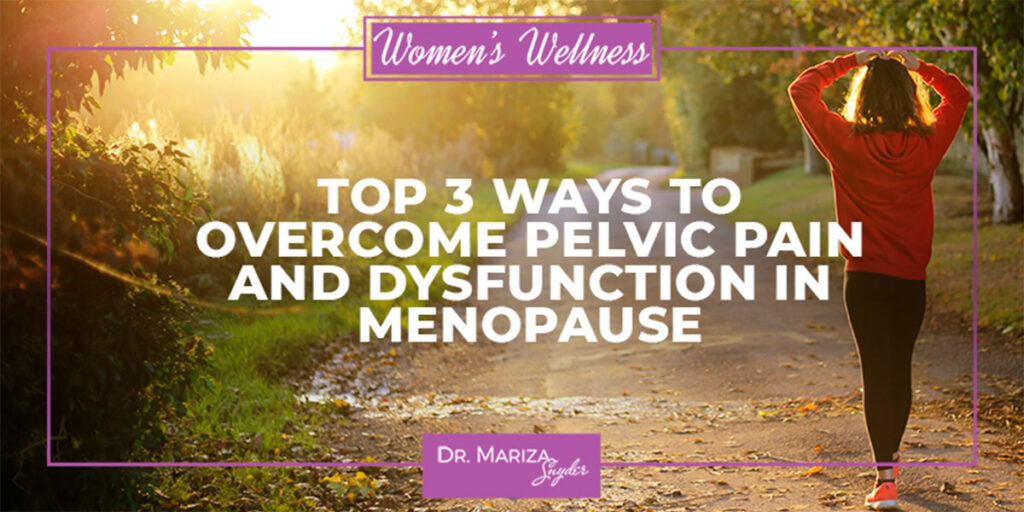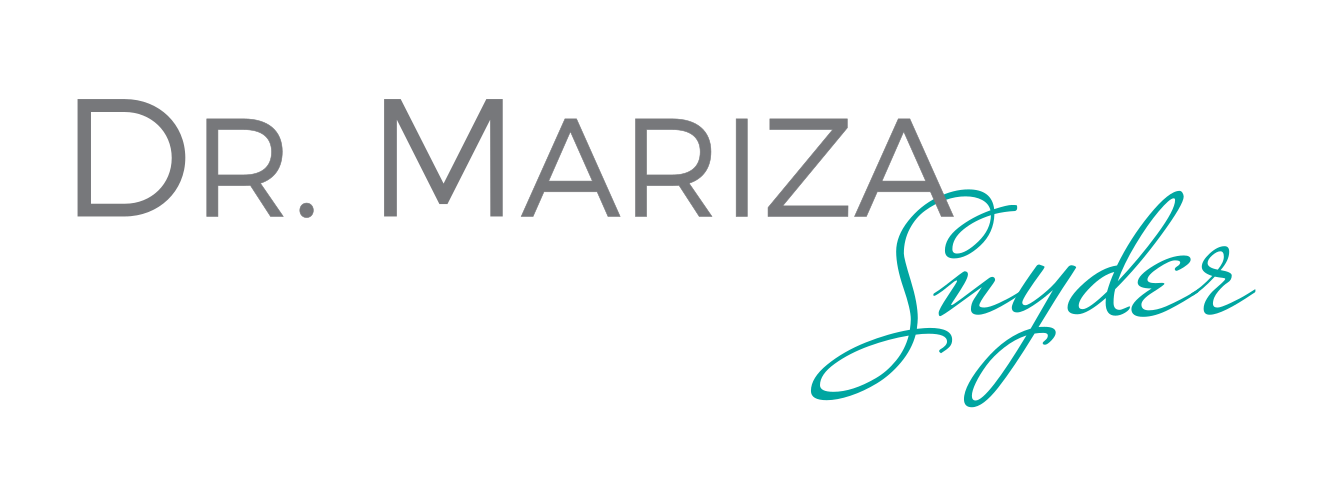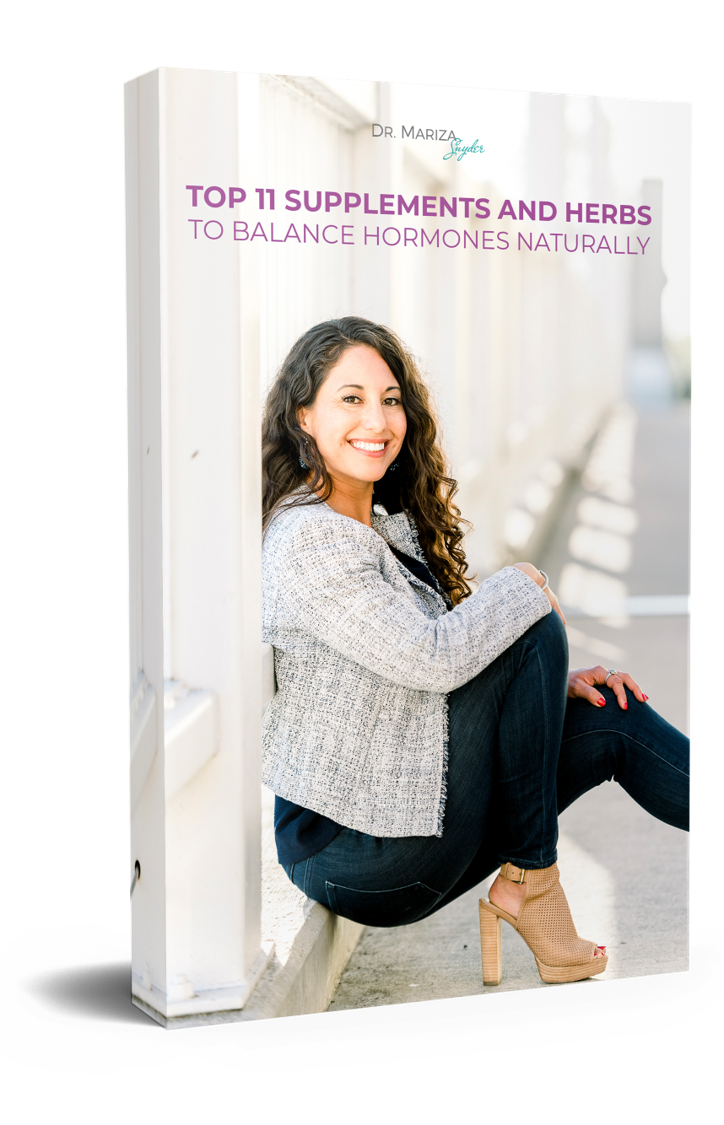
Pelvic pain. Painful sex. Bladder leaks…
No one likes to talk about them, but so many of us are suffering from pelvic issues in silence.
Conventional medicine considers these things a “normal” part of aging; something that’s to be expected through perimenopause and menopause.
“Can’t you just deal with it and go on living your life?”
Even if they don’t use those exact words, THIS is the primary feeling women get from their doctors when they raise concerns about pelvic pain. And this is NOT right.
Getting older, transitioning to menopause, or passing a certain decade of life doesn’t mean it’s suddenly ok to live life with embarrassing symptoms or pain (and don’t let anyone tell you otherwise).
Your pelvic health is crucial to maintaining your energy, sexiness, and vitality through your 40s, 50s, 60s, and beyond.
And while many conventional doctors may tell you to “just do more Kegels” and put on a panty liner, I’m here to shed light on natural, practical steps you can take to stop embarrassing leaks, relieve chronic pain, and ensure your ability to feel pleasure in sex and in life for years to come!
WHAT IS PELVIC DYSFUNCTION?
This is a BIG umbrella term that encapsulates many different experiences and symptoms. Some of the biggest ones include…
- Urinary frequency, urgency, or incontinence
- Not being able to hold in gas
- Urine leakage when sneezing, jumping, running, coughing, or having sex
- Pain with sex
- Constipation (or not feeling like you can complete a bowel movement)
- Constant pain or pressure in your vagina, lower back, and/or hips
- Muscle spasms
- Pain in the pelvic floor when sitting
- Pelvic organ prolapse
- PCOS, endometriosis, adenomyosis, and other diseases of the pelvis
- Specific conditions like vulvodynia, interstitial cystitis, or vaginismus
Pelvic floor issues affect more than just your ability to have sex without pain or stop embarrassing bladder leaks (even though those are important too). Your body works as a unit, and if you neglect your pelvic health, other areas will suffer as well.
SURPRISING ROOT CAUSES OF PELVIC ISSUES
So if you’re living life cross-legged or avoiding intimacy because you’re afraid of the pain, what landed you here? Why, all of a sudden, do you not recognize your lady parts and feel like you can’t embrace life with the zest and energy you used to?
Yes, “getting older” is a factor. Your muscles are weakening (unless you’re actively strengthening them… more on that in a minute).
But there are bigger things at play that are causing your pelvic pain and leakage. Here are the biggest players…
Insulin Resistance
Insulin is the hormone that your body releases to manage glucose (sugar) levels in your blood. Over time, if your diet consists of lots of carbs or sugar (as most of ours do), your body becomes resistant to the chronically elevated insulin levels in circulation, which triggers your body to release more insulin, perpetuating the cycle.
Insulin resistance is the #1 root cause of MANY of the biggest issues in menopause, including pelvic pain, vaginal dryness, bladder leaks, hot flashes, stubborn belly fat, and more. Studies show that the strength and health of your vagina and pelvic muscles are directly impacted by your body’s insulin levels. (1)
Low Estrogen
Estrogen is one of the primary hormones that impact your pelvic strength and overall feminine health. As estrogen levels decline naturally throughout perimenopause and menopause, you will experience more dryness, leakage, and pain.
BUT hormone replacement is not your only option! See below for natural tips to ease this transition and support healthy estrogen levels through menopause and beyond.
Stress, Inflammation, and Physical Strain
Chronic stress is a primary driver of inflammation in your body. Just like inflammation alters your digestion, hormones, and brain function, it also makes pelvic pain and leaks so much worse.
If your inflammation is out of control and your body is taxed from improper exercise, lack of sleep, or just the craziness of the life you’re living, your pelvic health is going to pay the price.
If you find yourself suddenly feeling like the list of symptoms above is hitting a little closer to home than you’re comfortable with, or if you KNOW something’s off “down there” but aren’t sure what to do about it…
I have good news for you!
There are 3 foundational principles that you can start implementing immediately to get rapid relief from your pain and to ensure your pelvic health for years to come:
#1: Whole-Body Fitness
You know Kegels are an important part of your pelvic health regimen (hey, at least there’s something that your doctor got right)…
But that is NOT the full picture!
Your pelvic floor is an integral part of your whole body, and supporting muscle strength in your legs, back, abdomen, and encouraging healthy circulation and hormone levels through the right kinds of exercise can make all the difference in how you feel!
Why Exercise for Pelvic Health?
It’s no surprise that exercise increases circulation to ALL your muscles, including your pelvic floor. Increased circulation lessens dryness, improves muscle tone and strength, and can prevent leaks and restore your control.
Plus, gentle exercise addresses the biggest hormone root causes of pelvic dysfunction. Targeted fitness practices can lower insulin and cortisol levels, reducing the stress that these hormones cause on your body. (1)(2)
Plus, some exercises can even naturally increase estrogen levels to help get the balance back and improve pain or dryness! (4)
How to Exercise…
Here are some important tips to consider when deciding how to exercise to improve pelvic pain:
#1 – Kegels! Do them. 30-40 Kegels per day should be the goal to maintain muscle tone down there and trigger circulation where you need it.
#2 – Focus on whole-body strength, not size. If your goal is weight loss, you may find yourself pushing harder than is good for your body. Focus on muscle groups and whole-body strength, being mindful of what is serving your body best during this season. Your pelvic floor is connected to your abdomen, back, and legs, so supporting those muscle groups will also take some of the strain off of your lady parts.
#3 – Don’t “push through the pain.” Workout culture glorifies high intensity and not giving up, no matter what your body says. That is NOT going to serve your body where you are right now. If it hurts, don’t do it… it’s just going to put more strain on your pelvic floor and cause more damage. Workouts that include lots of jumping, crunches, and heavyweights all put unnecessary stress on your pelvic floor and may make the problem worse, not better. (5)(6)
#4 – Work out mindfully. Listen to your body. Let it tell you what is working and when to stop. Gentle exercise is WAY more effective during menopause than high-intensity workouts. Focus on yoga, resistance training, lighter weights, or similar exercises that focus on the right muscle groups but don’t over-tax your body.
#2: Focus on What You Eat
You may think that your mouth and your lady parts are WAY too separated for food to make a difference in your pelvic health…
But think again!
What you eat can directly improve or damage your pelvic floor, and here’s why…
Why Does Food Matter for Pelvic Health?
As I mentioned above, insulin is one of the biggest players for maintaining a healthy pelvic floor throughout menopause. (7) Food is the BIGGEST factor in keeping your insulin levels where they should be!
Inflammation is your body is another key factor to consider with pelvic pain or other dysfunction. The best way to combat inflammation and put out the wildfire it causes through your WHOLE body is with food.
How to Choose Foods That Support Healthy Lady Parts…
One of the most overlooked factors that you should consider with your vaginal and pelvic health is maintaining a healthy microbiome. Yes, these bacteria live ALL over your body, not just in your gut, and your pelvic floor is no exception.
Since inflammation disrupts this balance, choosing foods that support healthy bacteria growth, decrease your body’s overall inflammation level, and maintain the proper insulin balance should be your priority.
Here are some ideas:
- Omega-3 Fatty Acids (like you find in some fish, chia seeds, and flax seeds) help reduce inflammation and support pelvic muscle health.
- Fermented foods provide healthy bacteria to keep your microbiome in the best balance
- Fiber is an essential piece to keeping your microbiome happy AND keeping your digestion moving. If you’re dealing with constipation on top of your other pelvic pains, consider adding THIS easy, non-gritty, and gentle fiber supplement to your daily regimen.
- Low-glycemic index fruits and veggies (especially berries, greens, and apples) provide fiber, antioxidants, and key nutrients to lower inflammation, support healthy bacteria growth, and maintain insulin levels.
- Anti-inflammatory herbs and spices (like turmeric, ginger, cinnamon, and green herbs including cilantro and oregano) to combat excess inflammation
- Plenty of water. Hydration is essential to a healthy inflammatory response, as well as detoxification of hormones and overall circulation.
#3: Targeted Hormone-Supporting Supplements
Supplements are the easiest and fastest way to deliver key nutrients and support to every cell in your body, and your pelvic health is no exception!
Why Supplements for Pelvic Health?
Nutrient deficiencies, widespread inflammation, and fluctuating hormone levels all take their toll on the health of your lady parts. Correcting these things with targeted supplements is not a band-aid solution, but a long-term way of ensuring your body will continue to work FOR you in the years to come!
Which Supplements Are Best?
Here are the top 5 supplements I recommend for women dealing with pelvic dysfunction (and these ALL help with many of the other common menopause complaints, too!):
- Vitamin D. Vitamin D deficiency can cause more vaginal dryness and pelvic muscle weakness, especially during menopause. (8) It is also an essential piece of maintaining hormone levels, lowering inflammation, improving energy, boosting inmunity, and so much more. Get my recommended vitamin D supplement here (quality-tested and guaranteed to be the most bioavailable and effective at raising your vitamin D levels!) >>
- Quercetin is a powerful anti-inflammatory agent that has been shown to lessen pelvic pain and leaks. (9)
- Zinc is an essential mineral that is a critical part of lowering inflammation and supporting pelvic health. If you’re deficient in zinc, you’re more likely to experience vaginal dryness or pain, especially over age 40. Your daily multivitamin may contain zinc, but it’s worth investigating to see if adding an extra daily dose could make a difference!
- Magnesium is an overall hormone powerhouse that is essential for lowering your body’s inflammation and supporting healthy hormone levels (including insulin and estrogen). There are many different types of magnesium available, but I recommend Essentially Whole® Magnesium Restore because it is formulated for optimal absorption in your body so you get the most bang for your buck! Get it here >>
- Essentially Whole® Hormone Balance is my one-stop-shop solution for the biggest female hormone concerns. With powerful ingredients like Black Cohosh, DIM, Chastetree, and more that are known to ease vaginal dryness and support pelvic health, Hormone Balance is the perfect supplement blend to ease your symptoms and support optimal hormone levels through perimenopause, menopause, and beyond. Get it here >>
THE BOTTOM LINE…
Your hormones and your body may be changing, but that does NOT mean you need to consider suffering from painful or embarrassing symptoms! It is in your power to claim a vibrant, sexy, energized life for decades to come.
I have even more powerful insights and tips like these in my book, The Essential Oils Menopause Solution. It’s packed with the groundbreaking research that no one else is talking about, plus easy, practical tips to help you live life your way for decades to come!
Starting your liver-healing journey with a simple, restorative reset will set you up for faster, easier health wins moving forward!
You can think of it as a “spring cleaning,” but for your body (and at any time of year)!
The daily changes I outlined above will work wonders to improve your symptoms, but committing to doing a detox is a key piece in restoring hormone balance, healing your liver, and transforming your energy, weight, sleep, and more.
I created the 14-Day Detox as an easy-to-follow plan you can do any time, anywhere, and experience massive health wins (like increased energy all day long, sleep that is restful, weight loss that feels easy, and more)… It will leave you wondering why you didn’t do it sooner!
The 14-Day Detox combines the power of supplements, targeted foods, and healing self-care to ensure your body can function at its best.
Order The Essential Oils Menopause Solution and Get Over $500 in Bonuses
References:
1. https://www.ncbi.nlm.nih.gov/pmc/articles/PMC4559236/
2. https://www.ncbi.nlm.nih.gov/pmc/articles/PMC4995180/
3. https://pubmed.ncbi.nlm.nih.gov/18787373/
4. https://www.ncbi.nlm.nih.gov/pmc/articles/PMC6619462/
5. https://pubmed.ncbi.nlm.nih.gov/11999199/
6. https://journals.lww.com/nsca-scj/fulltext/2011/08000/to_crunch_or_not_to_crunch__an_evidence_based.2.aspx
7. https://www.ncbi.nlm.nih.gov/pmc/articles/PMC4559236/
8. https://hermanwallace.com/blog/what-does-vitamin-d-have-to-do-with-the-pelvic-floor
9. https://pubmed.ncbi.nlm.nih.gov/21798389/


No comments yet.